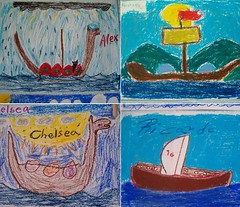 Yesterday nbc4.com posted this story on their website. I recommend that you go and read the whole article before you continue with my own ramblings. Go ahead, I’ll wait.
Yesterday nbc4.com posted this story on their website. I recommend that you go and read the whole article before you continue with my own ramblings. Go ahead, I’ll wait.
All done? Good.
I’m sure the author of that article wanted his or her thesis to be that there’s a growing problem among today’s youth where they think that the rules in the digital realm are different from the rules in the analog realm. The solution of course is to more thoroughly educate students about plagiarism and to also know how to look for it.
At least that’s what I think the author’s take was on it, and two years ago I would have agreed with it completely.
Let me first preface my own thesis with the following statements:
- Yes, I think plagiarism is wrong.
- Yes, I think students who knowingly commit plagiarism should be punished.
- Yes, I think that we should both educate our students on the perils of intellectual theft and keep a watchful eye for signs of the same.
I don’t have any problem acknowledging any of those points. My contention is with the point of view.
Allow me to elaborate by quoting two sentences from the story itself.
I would propose that the solution would be to look at that part of the problem in a new light. Remember, when the Industrial Revolution put many farmers out of work they saw the change as catastrophic, but at the same time those unemployed workers were hired in droves to work in the factories. (Thanks for the history lesson, Bob!)
At the risk of sounding too much like Mr. Warlick, we’re in the thick of a digital revolution. The farmers who couldn’t bear change suffered, starved, and in the worst of it started riots and rebellions. Those that changed had a chance.
It’s sad that all that free information out there is seen as a disadvantage for students. With our current teaching methods (at least in most schools) we’re still pretending we’re in the 1900s or even 1800s. “Memorize this, quiz on Thursday” might have worked well when we were kids, but let’s be honest here.
How often do you encounter problems where you cannot check a reference if necessary. They make those teachers’ editions for a reason, after all!
I currently do not have textbooks that I can use in my classrooms, and frankly I don’t want them. I have a few reference materials I can use in and out of the classroom, but it’s so much easier to use the internet that sometimes O don’t even crack a book open to plan a lesson. As someone who is required to use his art lessons to teach all the other subjects, I think that’s really saying something.
If we’re supposed to prepare students to survive in the “real world,” (That is our job, right? Right?!) then we should show them how to use references the same way we do.
- Don’t just copy that page from Wikipedia, check some of it’s facts to see if they’re accurate!
- Don’t just take an essay off the internet, use it as a reference in a blog post!
- Don’t spend all your time memorizing the periodic table, find out what you can do with all those cool elements! (Don’t forget your safety goggles!)
What if a teacher assigned a project where the report wasn’t even graded, but the responses to other students’ reports were?
I’ve rambled on long enough, so how about one of you wrap this up for me?





